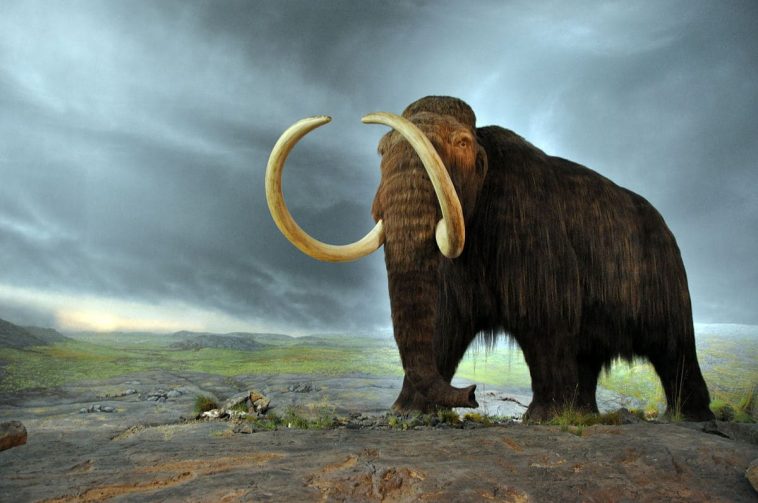We have been blessed with thousands of species of unique animals and birds all around us. They have been on our planet for millions of years, but sadly, some species have officially vanished forever. Extinction is a natural phenomenon, and scientists estimate we lose several species in a year due to natural as well as man-made factors. In the past centuries, about 1,000 species have become extinct. The West Virginian woodland bison, Arizona’s Merriam’s Elk, the Rocky Mountain grasshopper, Passenger pigeon, and Puerto Rico’s Culebra parrot are all animals of the past now. The population of several animals has become endangered, while some are nearing extinction, allowing to changes and reduction in natural habitat, loss of forest cover, industrialization, hunting, and poaching. Let us go through the top 10 extinct animals that once walked the surface of our earth, but have now said their final goodbyes.
Extinct Animals
1. Dodo
The dodo was a flightless bird that was native to Mauritius, in the Indian Ocean. The life for the dodo came to an abrupt end in the 1600s, when European explorers landed on Mauritius, and the Dutch sailors ate the beast to extinction. The dodo was a large and heavy bird that had wings but was unable to swim or fly. The bird grew up to about three feet tall, with downy grey feathers and a white plume. Dodos had a pale yellow or green, curved beak that was their only defence.
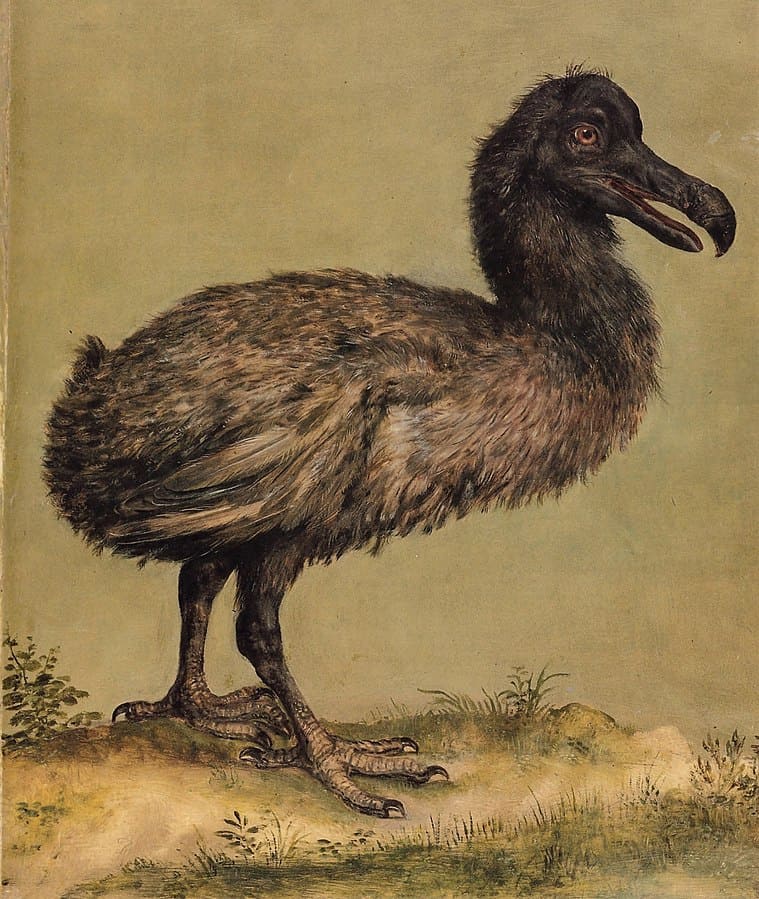
Image Source: Wikimedia
2. Quagga
The Quagga is a mammal closely related to modern horses and zebras. It was a species that looked like a cross between a horse and a zebra. Its body had stripes on its head and neck that faded as they went down on the animal’s brown body. The Quagga inhabited the desert areas of South Africa until it was hunted to extinction in the 1870s. Ruthless hunting and planned extermination by colonists lead to the Quagga’s extinction. Sadly enough, the last captive Quagga died in Europe in the 1880s.
Also Read: Top 10 Animals Beginning With the Letter T
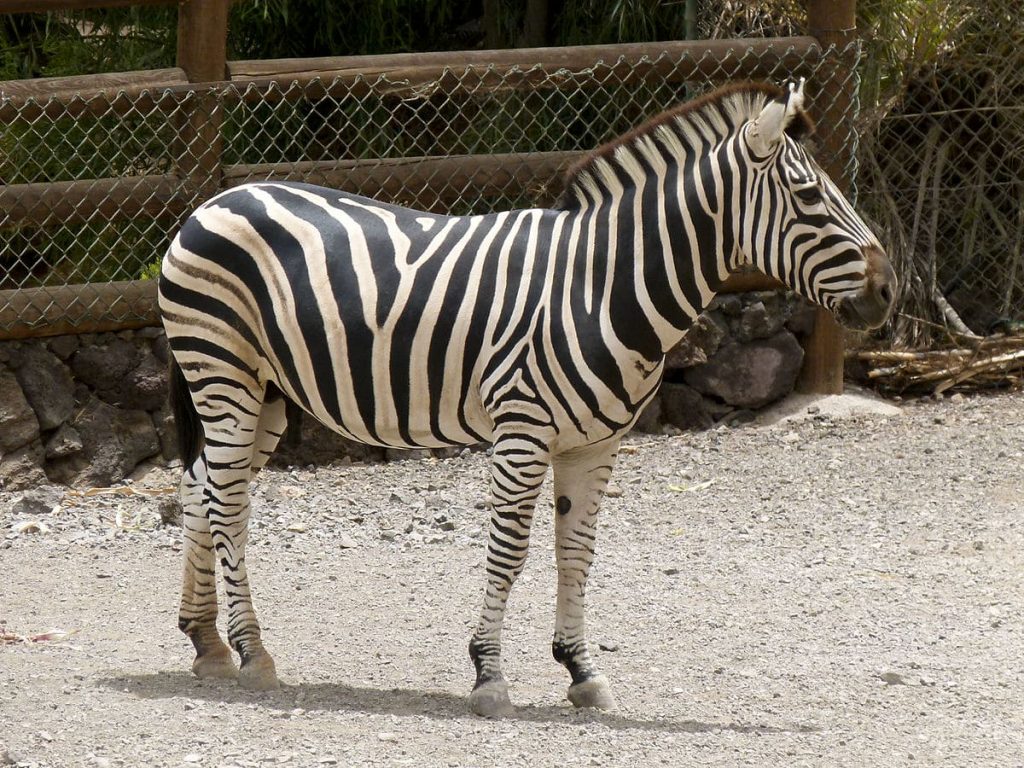
Image Source: Wikimedia
3. African Black Rhino
The Western Black Rhino was the rarest of the black rhino subspecies. It was commonly found in several African countries, including Kenya, Rwanda, and Zambia. They were big and bulky but could run up to 55 km/hour and quickly change direction. They had a hooked upper lip that distinguished them from other rhinos. However, widespread sports hunting in the early 20th century resulted in a rapid decline of this rhino species. The loss of habitat due to industrial agriculture further resulted in their species becoming extinct.
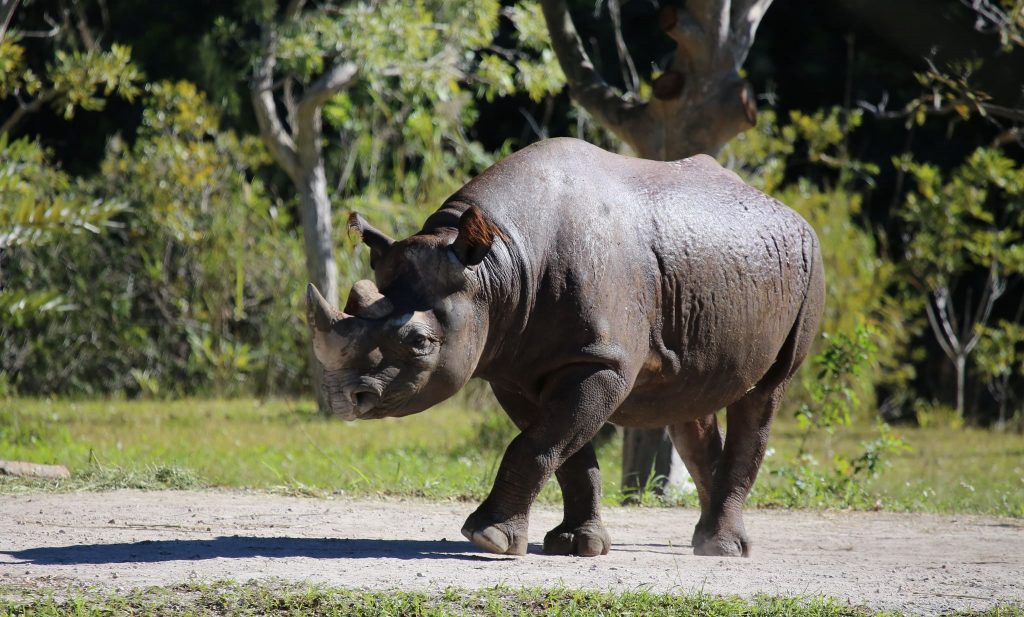
Image Source: cuatrok77(Flickr)
4. Passenger Pigeon
The Passenger pigeon or the Wild pigeon is an extinct species of pigeon that was native to North America. It got its name due to the migratory habits of the species. They were bigger than normal pigeons and the male pigeons had a pinkish body and blue-grey head. The extinction of the passenger pigeon happened in just the last 50 years. Passenger pigeons were rapidly wiped out due to merciless hunting, deforestation and other factors. From an astounding 3 to 5 billion population when the first Europeans arrived in America, it became zero-till 1914, when even the last known bird became dead.
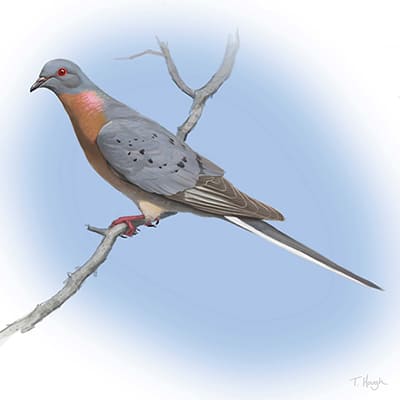
Image Source: Wikipedia
5. The Great Auk
The Great Auk was a flightless bird that much resembled the modern-day penguin. It was a great swimmer, stored fat for warmth, nestled in dense colonies, and mated for life. It also had a heavy hooked beak. Beginning in the 16th century, Europeans hunted the Great Auk for down feathers, which were easy to catch since they could not fly. Once the species became rare, most of them were collected by museums and collectors for specimens. This finally forced the bird to extinction in 1852.
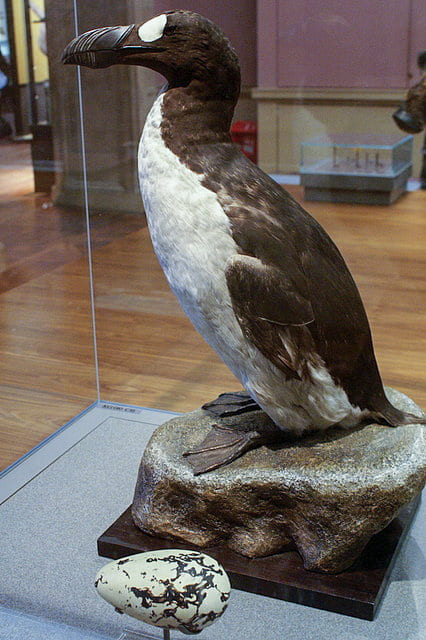
Image Source: Wikimedia
6. Wooly Mammoth
The Woolly Mammoth inhabited the arctic tundra regions of the northern hemisphere in the early Holocene period. These massive herbivores could reach 11 feet in height and weighed six tonnes, and resembled the African elephants. However, they had bodies covered in brown, black, and ginger fur. The Woolly Mammoth had long tusks for fighting. Hunting and climate change expedited their extinction at the end of the last glacial period.
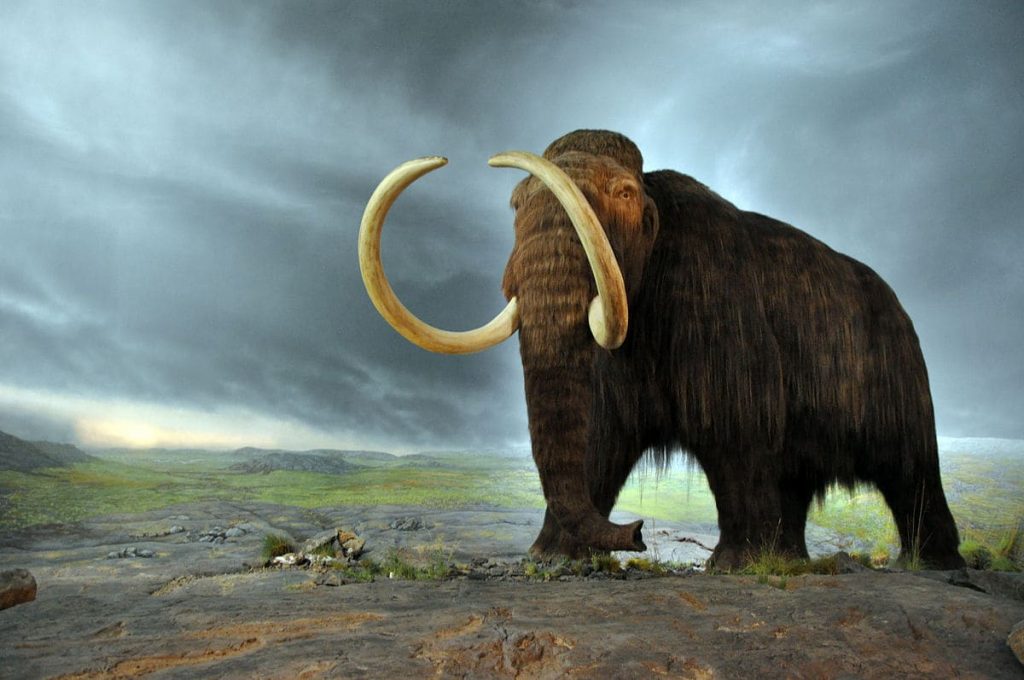
Image Source: Wikimedia
7. Irish Elk
From Ireland to Siberia, Irish Elk populated much of northern Europe at the end of the last glacial period. They had the largest antlers of any deer species, that reached 12 feet in width. These elks could grow up to seven feet tall and were heavy animals with 700kg weight. Irish Elks evolved around 400,000 years ago and died out 5,000 years ago, most probably due to extensive hunting by humans.
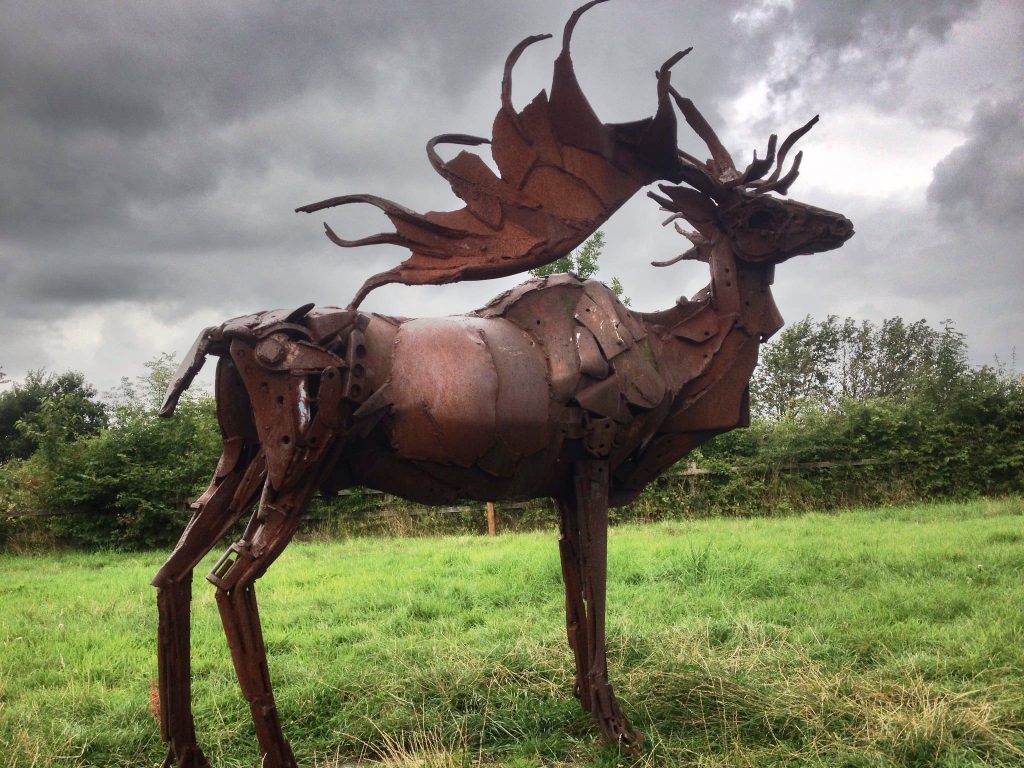
Image Source: Dave Foord
8. Caspian Tiger
The Caspian Tiger resided just south of the Caspian Sea and in central Asia. These tigers were the biggest cats on the planet. They had legs much longer than other members of the tiger family. Human contacts conflicted with nature to bring about their extinction. Rapid hunting and loss of their habitat due to human settlement led to a drastic reduction in their numbers. The species of the Caspian tiger was officially declared extinct in the 1970s.
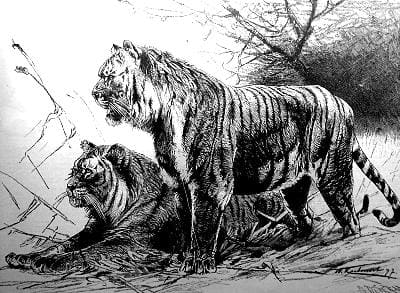
Image Source: Wikimedia
9. Giant Moa
The Moa or the Dinornis, was an ostrich-like heavy bird that became extinct. It was native to New Zealand. The name “moa” comes from the Polynesian word for “fowl”. These flightless ducks from the Hawaiian Islands, known as Moa Nalo, grew to be as large as geese. They had a small head with small eyes, and a long neck and a hefty body, supported by thick legs. They had a broad flattened beak, and fed on fruit and twigs, and swallowed stones to grind up the food in the gizzard. They were fiercely hunted down by the Maori tribes of New Zealand for food, meat, and their bones when they became extinct by the 17th century.
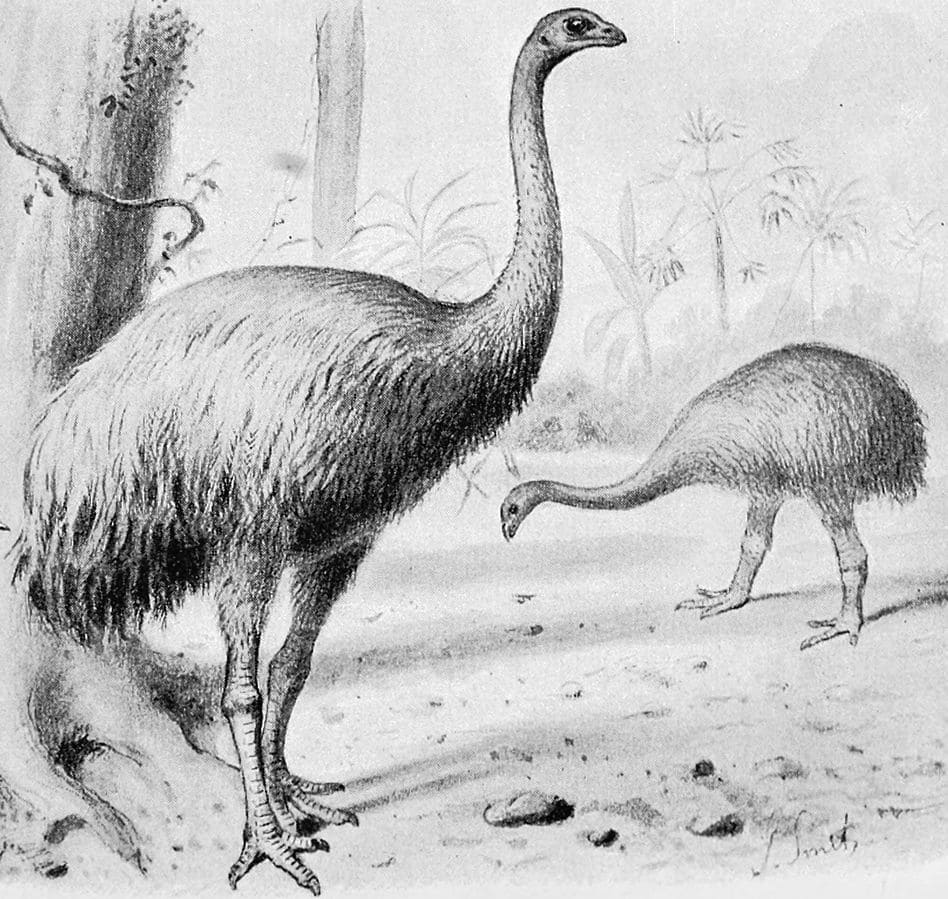
Image Source: Wikimedia
10. Golden Toad
The golden toad is an extinct species of true toads that were once abundant in a small, high-altitude region of Monteverde Cloud Forest, Costa Rica. These toads were of a brilliant burnt-yellow and spent most of their life underground. They emerged only for a few days at the end of the dry season to mate. Pollution, global warming, and chytrid skin infections led to the extinction of this species of the Golden toad. The last individual sighting was in 1989 and 2004, the toad was stated as extinct. It is one of the extinct animals in the world.

Image Source: Wikimedia
11. Archaeoindris
Archaeoindris is a giant lemur species and the largest known primate known to live in Madagascar. This is equivalent in the size of a male gorilla and belongs to the family of extinct lemurs known as “sloth lemurs”. The second-largest type of sloth lemur and it was first described by Herbert F in 1909 which is totally based on subfossil fragmentary jaws. Researchers have found only six bones from the lower. The unique part is that the remains have been seen only in one location Ampasambazimba in a subfossil site in central Madagascar.
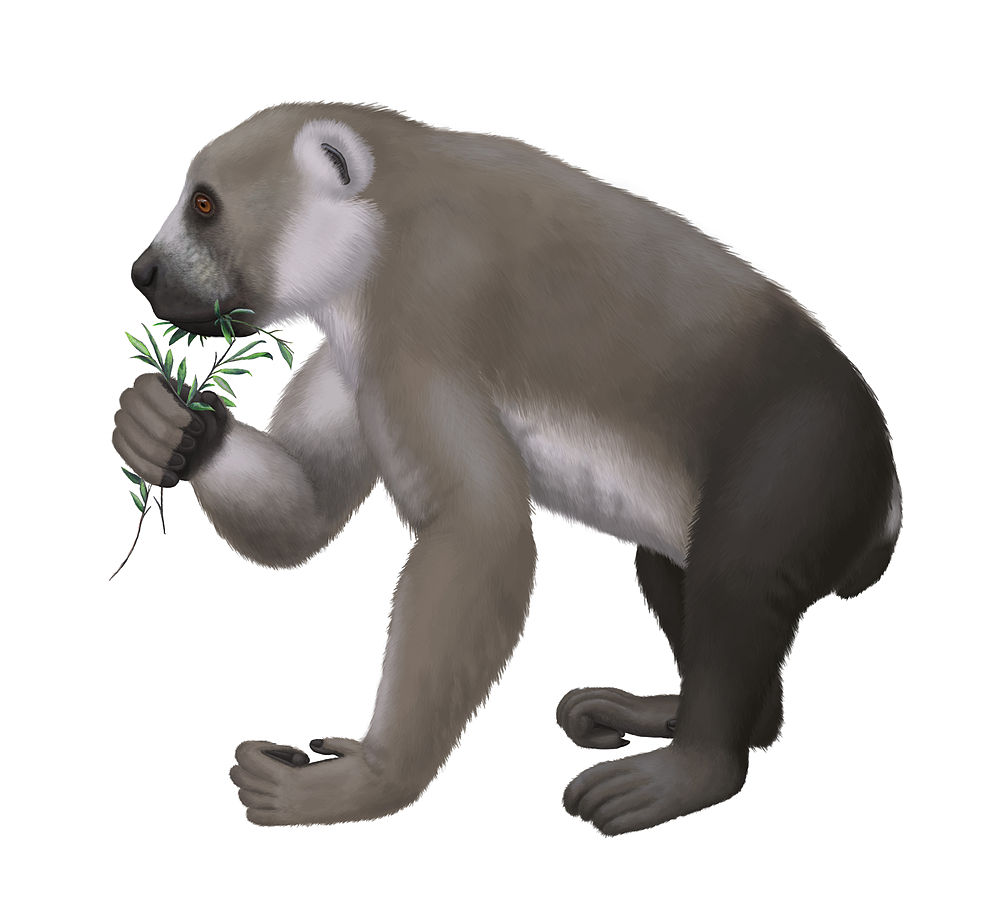
Image Source: Wikipedia
12. Archaeolemur
Archaeolemur is also an extinct genus of lemurs that has two species namely Archaeolemur edwardsi and A. major. They are mostly seen in the areas of Madagascar through much of the Holocene epoch. It loves to spend much of its time on the ground and body weight is around 15 and 35 kg. The species disappeared from Madagascar around 1047–1280 CE.
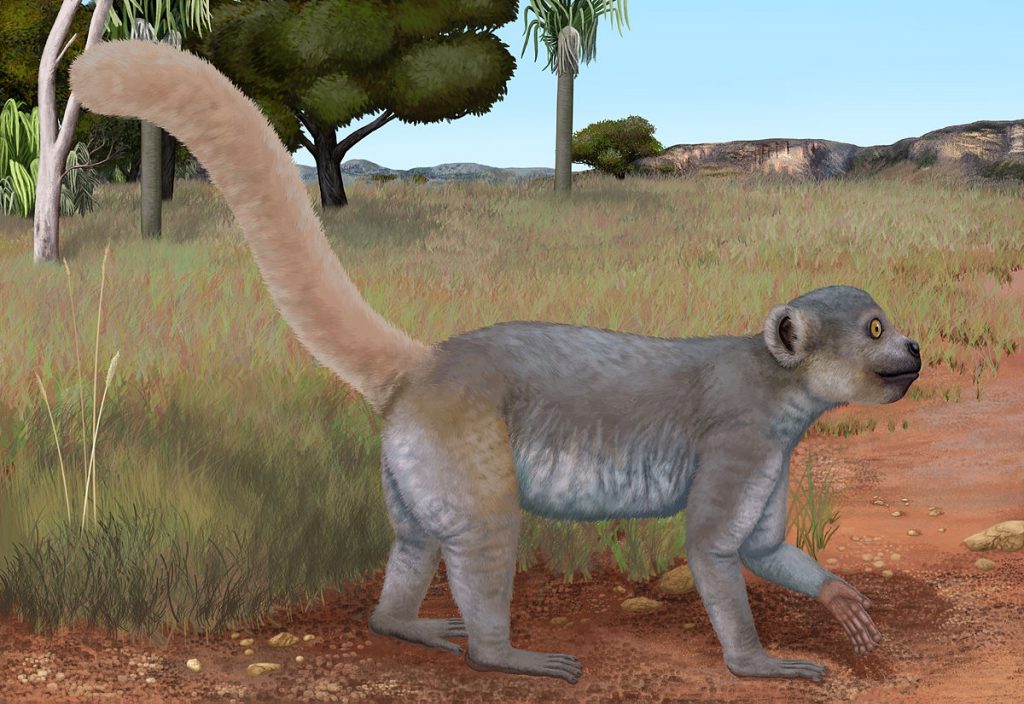
Image Source: Wikimedia
13. Babakotia
Again, this is medium-sized lemur also known as strepsirrhine primate mostly seen in the Madagascar belongs to the family of Palaeopropithecidae which s now as the the sloth lemurs. The species loves to eat leafs, however, it also eats fruits and seeds. The name of the species derives from the Malagasy common name for the Indri, babakoto which is a close relative of Babakotia.
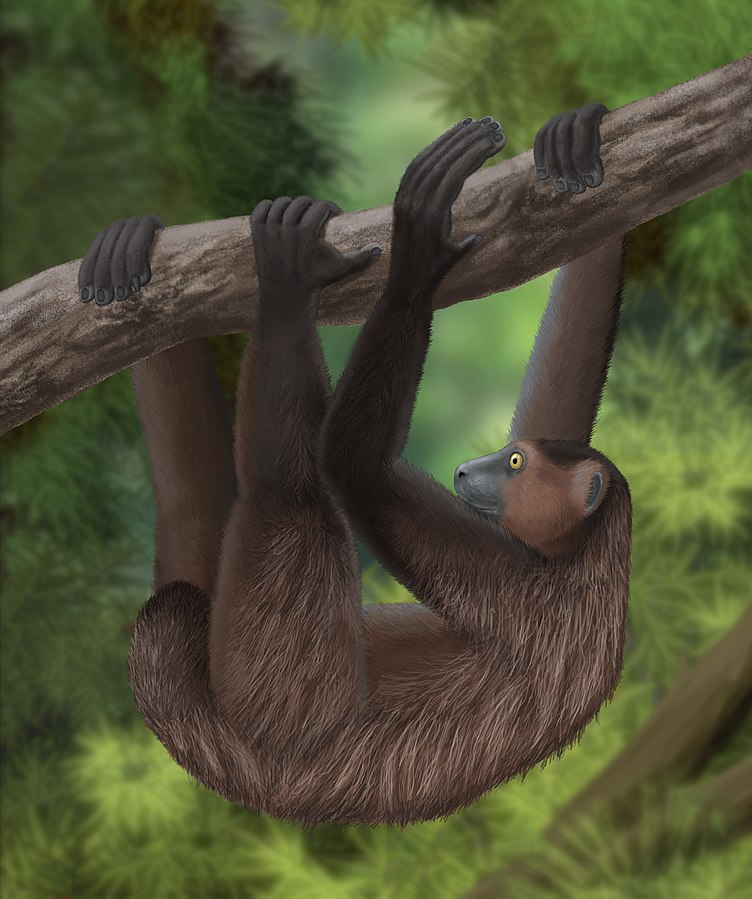
Image Source: Wikimedia
14. Canariomys
One of the extinct animals, Canariomys is extinct species of rodents that was one seen on the islands of Tenerife and Gran Canaria, part of the Canary Islands, Spain. It can reach upto the weight of 1 kg (2.2 lb). The species is herbivorous and the diet is based on plant materials, probably soft vegetables such as roots, ferns, and berries, but not grass.
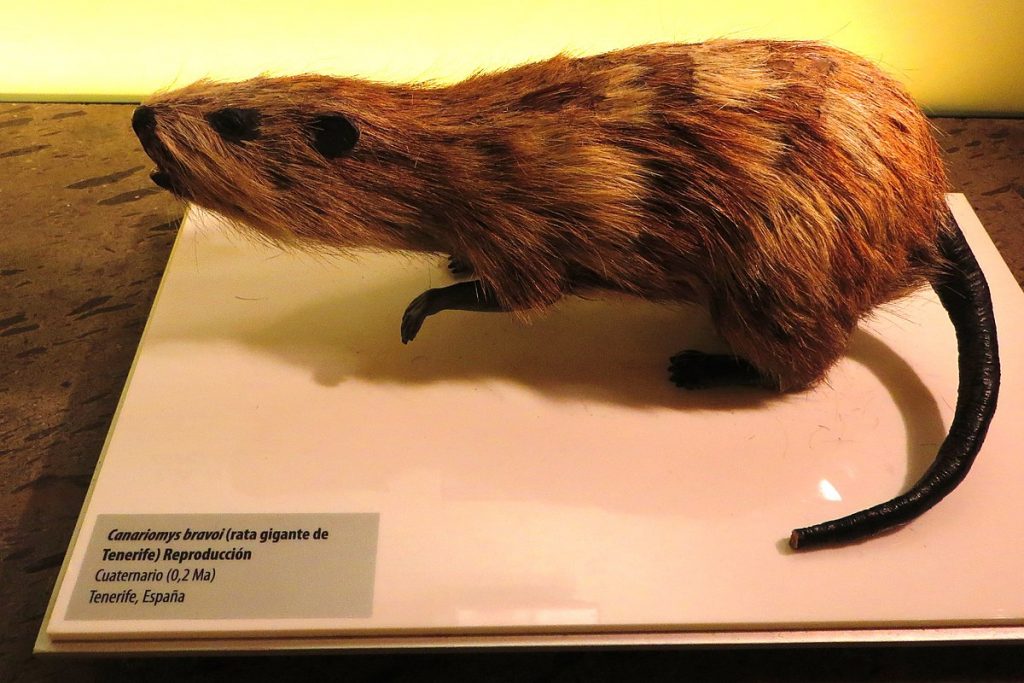
Image Source: Wikimedia
15. Giant fossa
Giant fossa also is known as Cryptoprocta spelea, The species is closely related to the mongooses and includes all Malagasy carnivorans. It was first discovered in 1902 and belongs to the family Eupleridae that too comes from mongooses. The species is known from the subfossil bones seen in northern, western, southern, and central Madagascar.
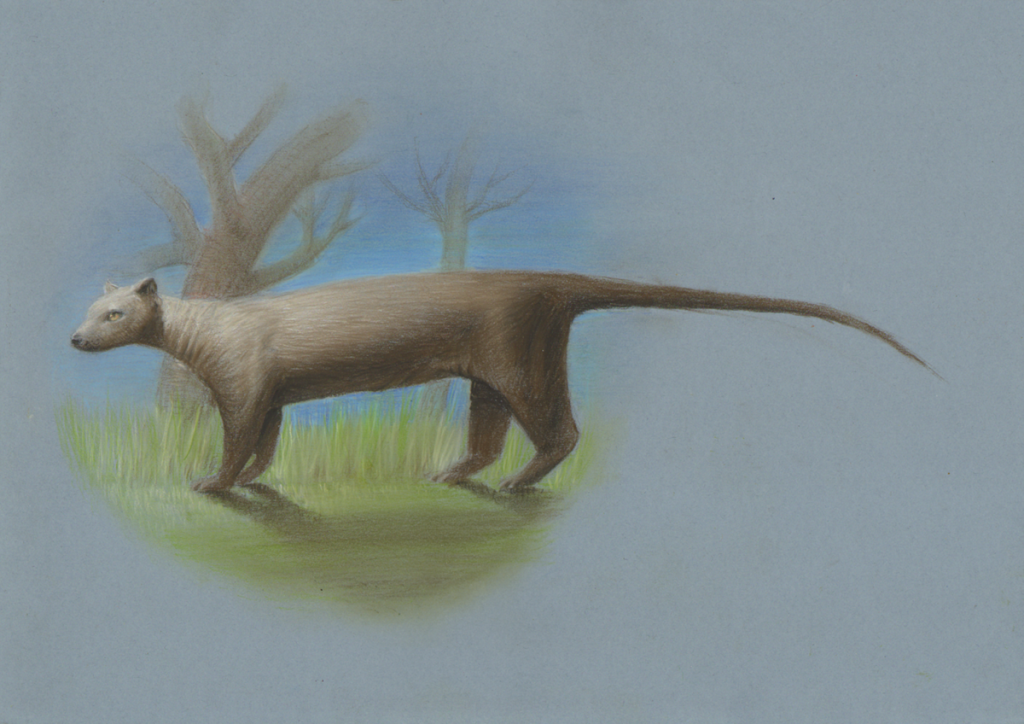
Image Source: Wikimedia
16. Alaotra grebe
Alaotra Grebe also known as Delacour’s little grebe or rusty grebe is an extinct bird species mostly seen in the Lake Alaotra and its surrounding lakes in Madagascar. The species is about 25 cm (9.8 in) long, however, flying of long distances is restricted because of small wings. The decline of the species was started in 20th century primarily because of habitat destruction.
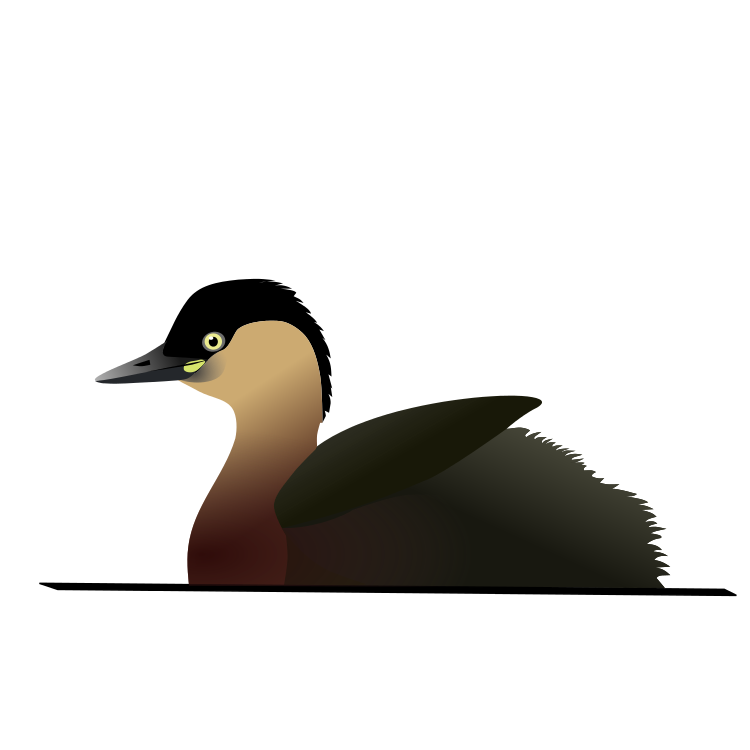
Image Source: Wikimedia
17. Ascension crake
Ascension crake is a flightless bird that was seen on Ascension Island in the South Atlantic Ocean. It was declared extinct in the year 1994 by Groombridge. The bird species belong to the family Rallidae and it is pandemic to Ascension Island. There are multiple sites where subfossil bones of the bird have been found in deposits at the base of vertical fumaroles. It is one of the extinct animals in the world.
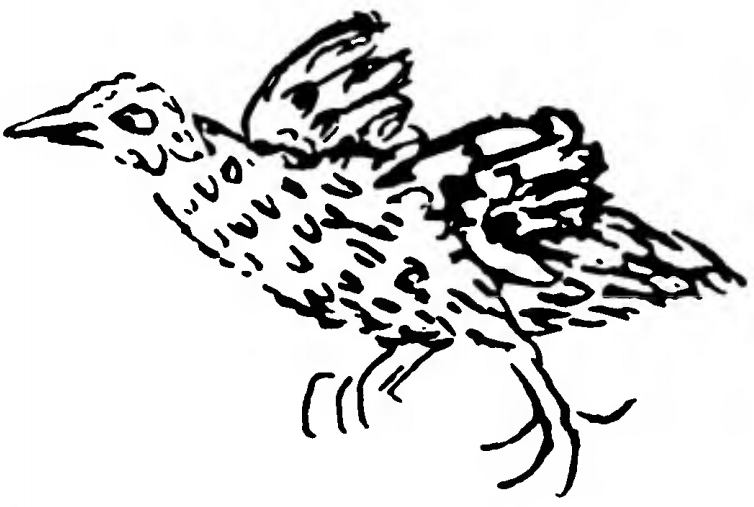
Image Source: Wikimedia
18. Broad-billed parrot
Broad-billed parrot also known as raven parrot is a exticnt parrot species belongs to the family of Psittaculidae. It was seen on the Mascarene island of Mauritius in the Indian Ocean east of Madagascar. There were multiple reasons for the decline of the species, firstly, its poor flying ability that makes them easy prey for sailors who visited Mauritius and thier nests are easily vulnerable to the introduced crab-eating macaques and rats.
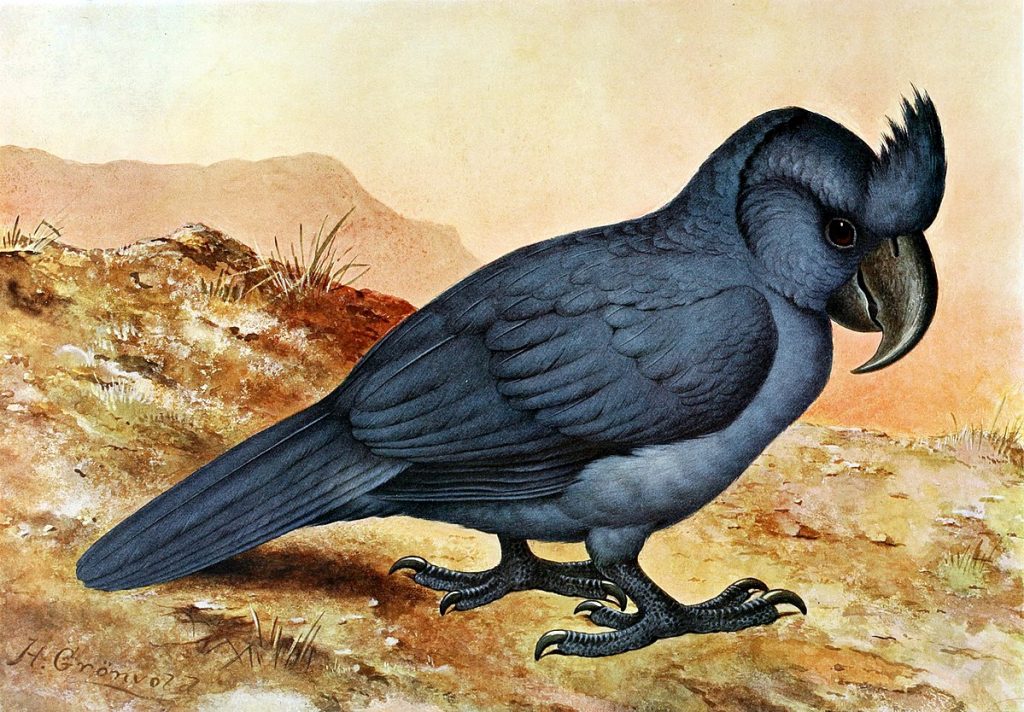
Image Source: Wikimedia
19. Canary Islands oystercatcher
Canary Islands oystercatcher also knew as the Canarian Oystercatcher, or Canarian black Oystercatcher is a shorebird which is mostly seen in the Fuerteventura, Lanzarote, and their offshore islets such as Islote de Lobos and the Chinijo Archipelago in the Canary Islands, Spain. The bird species is now considered to be extinct.
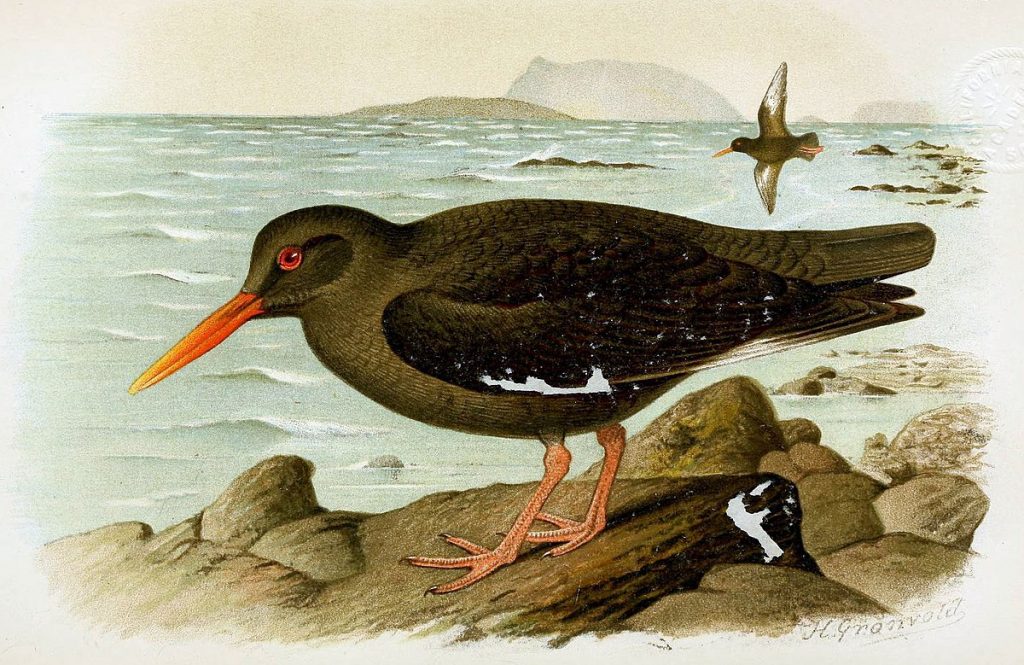
Image Source: Wikimedia
20. Delalande’s coua
One of the extinct animals, Delalande’s coua also known as the snail-eating coua or Delalande’s coucal is an extinct species of the non-parasitic cuckoo from Madagascar. The bird species were mostly seen in the area of Fito and Maroantsetra as well as near Toamasina (mostly coastal areas). Till now there are 14 specimens that exist nowadays, howvever, all are taken between 1827 and 1834 by the surgeon and naturalist Chevalier Joseph Alphonse Bernier.
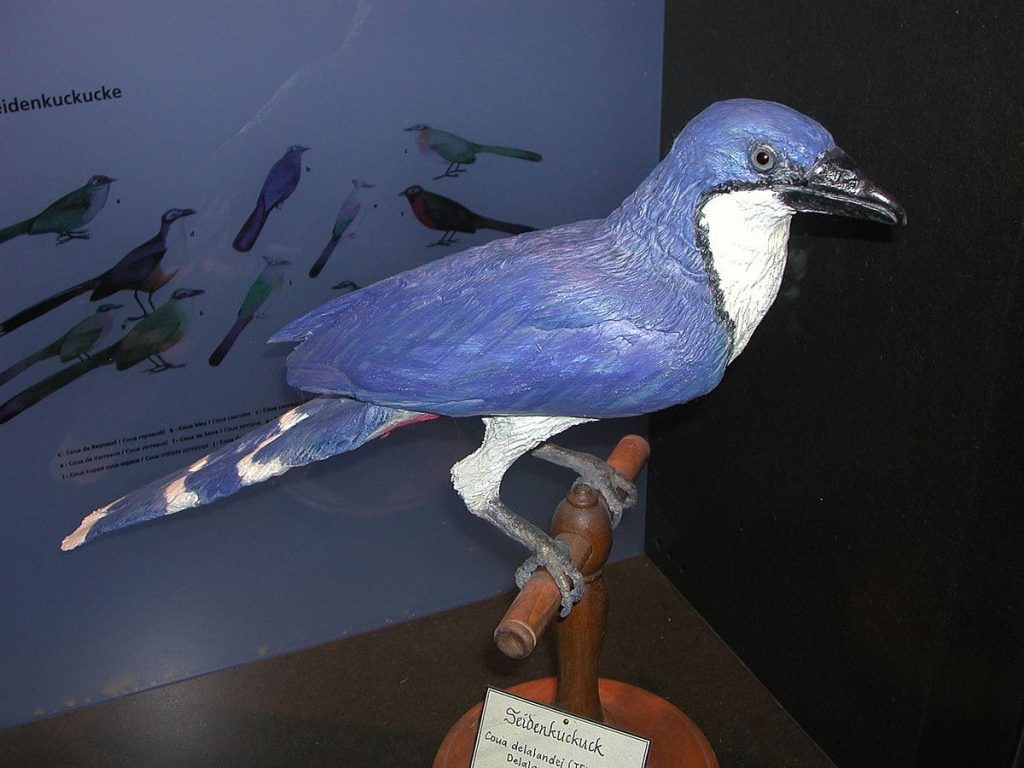
Image Source: Wikimedia
21. Voay robustus
One of the extinct animals., Voay robustus is an extinct species of crocodile from Madagascar and it includes only one species of crocodile that is V. robustus. There was subfossil for this species including complete skulls as well as vertebrae in Ambolisatra and Antsirabe. The name of the species comes from the Malagasy word for crocodile.
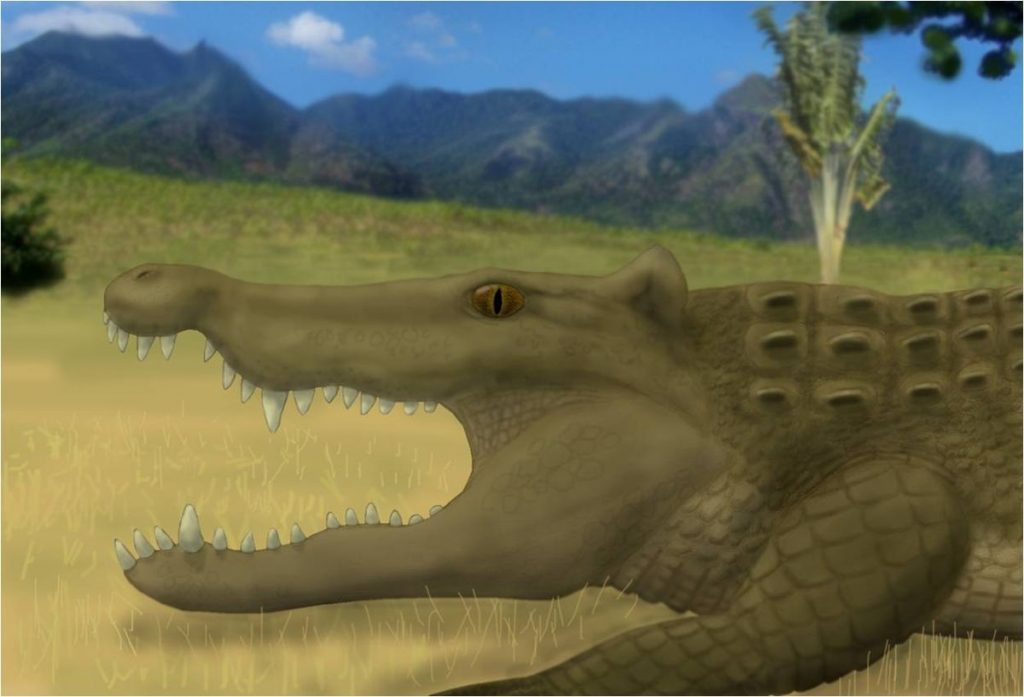
Image Source: Wikimedia
22. Cape Verde giant skink
Cape Verde giant skink is also known as he Cape Verde giant skink, Bibron’s skink, lagarto, or Cocteau’s skink is a species of lizard that was seen in the islets of Branco and Raso in the Cape Verde islands of the Atlantic Ocean. The primary cause of the extinction is human-caused habitat destruction and none of them have been doscovered since the early 20th century.
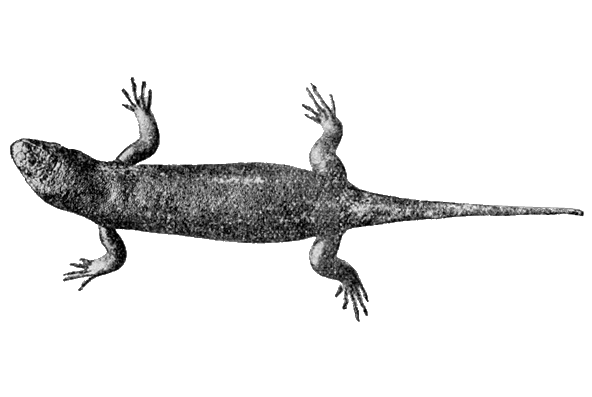
Image Source: Wikimedia
23. Domed Rodrigues giant tortoise
Domed Rodrigues giant tortoise is the extinct species of giant tortoise in the family Testudinidae. It is mostly seen on Rodrigues and belived to have extinct on 1800 as a result of human exploitation.
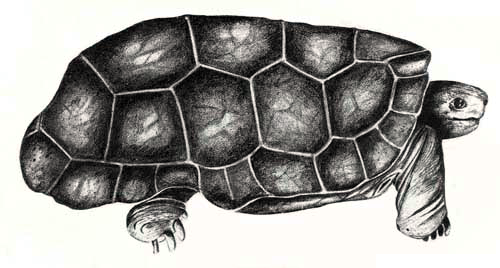
Image Source: Wikimedia
24. Reunion giant tortoise
Réunion giant tortoise is the extinct species of tortoise the belongs to the family Testudinidae, The species was seen in the areas of Réunion Island in the Indian Ocean. There were multiple species in the 17th and early 18th centuries. The primary reason for the extinction was they were killed in large numbers by European sailors, and finally became extinct in the 1840s.
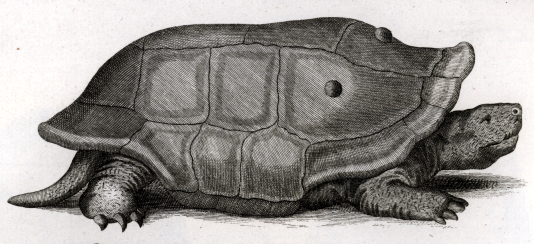
Image Source: Wikimedia
25. Rodrigues day gecko
Rodrigues day gecko is an extinct species of day gecko, a lizard belongs the family of Gekkonidae. It is seen in the areas of Rodrigues islands that were typically inhabited forests and dwelt in trees. It loves to feed on insects and nectar.
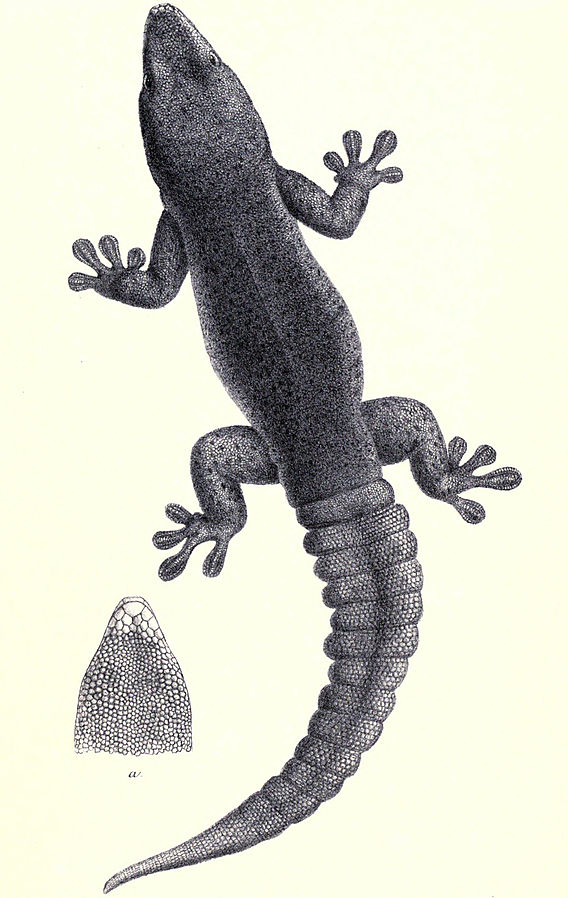
Image Source: Wikimedia
26. Du Toit’s torrent frog
Du Toit’s torrent frog is a extinct frog species which is also known as the Mt. Elgon torrent frog and the Kenya rocky river frog belongs to teh family the Petropedetidae and mostly seen in the Mount Elgon in Kenya. The species was first seen by the Cornelius Albertus du Toit in the year 1934, He is a member of Cape Town University, howvever, the species was last seen in the year 1962.
27. Osgood’s Ethiopian toad
Osgood’s Ethiopian toad also known as Spinophrynoides Osgood is an extinct species of toad that belongs to the family Bufonidae and was seen in the mountains of south-central Ethiopia. It was named after American biologist Wilfred Hudson Osgood who collected the original specimen in 1926–27.
28. Conraua derooi
Conraua derooi is an extinct species of frog that belongs to the family Conrauidae. It is mostly seen in the areas of Togo and Ghana. Commonly known as Togo slippery frog, before going extinct, few species was seen in the year 2005–2007.
29. Aplocheilichthys sp. nov. ‘Naivasha’
Aplocheilichthys sp. nov. ‘Naivasha’ is an extinct species of freshwater species that belongs to the family Poeciliidae. It was seen in the rivers of Kenya and later become extinct.
30. Labeobarbus microbarbis
Labeobarbus microbarbis is an extinct species of cyprinid fish and mostly seen in the Lake Luhondo in Rwanda. The fish was not recorded since alien fish species of Tilapia and Haplochromis.
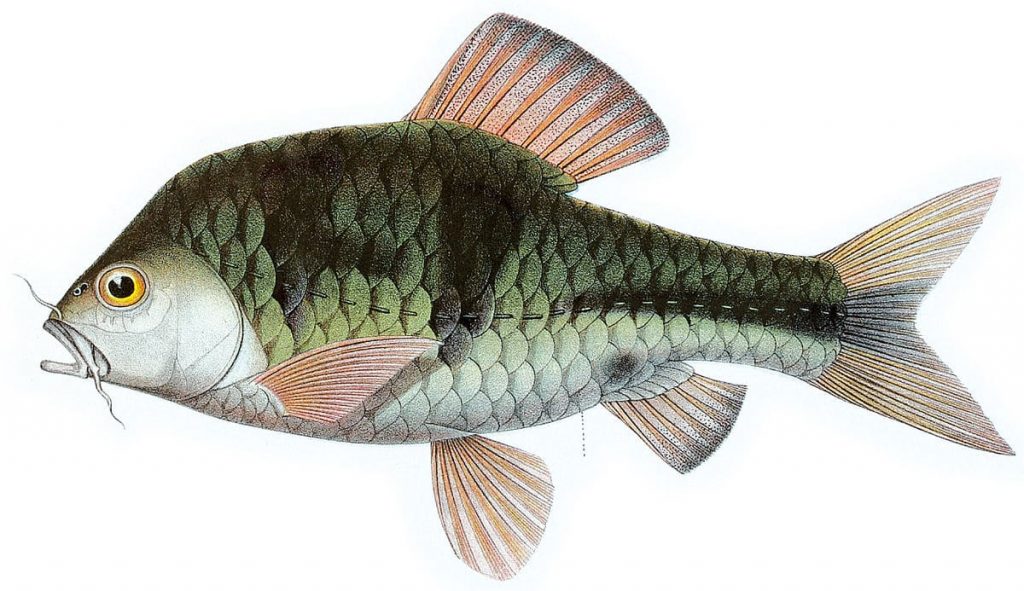
Image Source: Wikimedia
31. Pantanodon madagascariensis
Pantanodon madagascariensis is an extinct species of fish that belongs to the family Poeciliidae. It is mostly seen in eastern Madagascar and its natural habitats were rivers and swamps. It was extinct due to habitat loss.
32. Ptychochromis onilahy
Ptychochromis only is a fish species that was become extinct by the IUCN (International Union for Conservation of Nature), however, Onilahy River system is large, so there might be a possibility of remaining populations in the remote areas of the river. It is one of the extinct animals.
35. Salmo pallaryi
Salmo pallaryi is an extinct species of salmonid fish that was seen only in a single lake in the Atlas mountains of northern Morocco. The fish species was extinct in the year 1930s, primarily because of the introduction of common carp in the lake.
In this list we will discuss all animals that have become extinct on the island of Réunion, It is one of the 18 régions of France with much the same status as those situated on the European mainland. There are around 10 animal species that have become an extinct island.
36. Small Mauritian flying fox
Small Mauritian flying fox also is known as the dark flying fox is an extinct species of megabat. It is mostly seen in the island of Réunion and Mauritius in the Mascarene Islands of the Indian Ocean. The species become extinct because of forest clearance and hunting. It becomes extinct in the 19th century.
37. Reunion sheldgoose
One of the extinct animals., Reunion sheldgoose also is known as Kervazo’s Egyptian goose is an extinct species of goose from Réunion. The species is a close relative of the Egyptian goose and was about the same size. It was last seen in the year 1674.
38. Reunion night heron
Reunion night heron is an extinct species of Heron mostly seen in the Mascarene island of Reunion. The subfossil bones of the bird species were recovered in the late 20th century.
39. Reunion ibis
Réunion ibis is an extinct species of ibis that was endemic to the volcanic island of Réunion in the Indian Ocean. The subfossil was found in 1974 and was first scientifically described in 1987. The closest relative of the bird species is Malagasy sacred ibis, the African sacred ibis, and the straw-necked ibis.
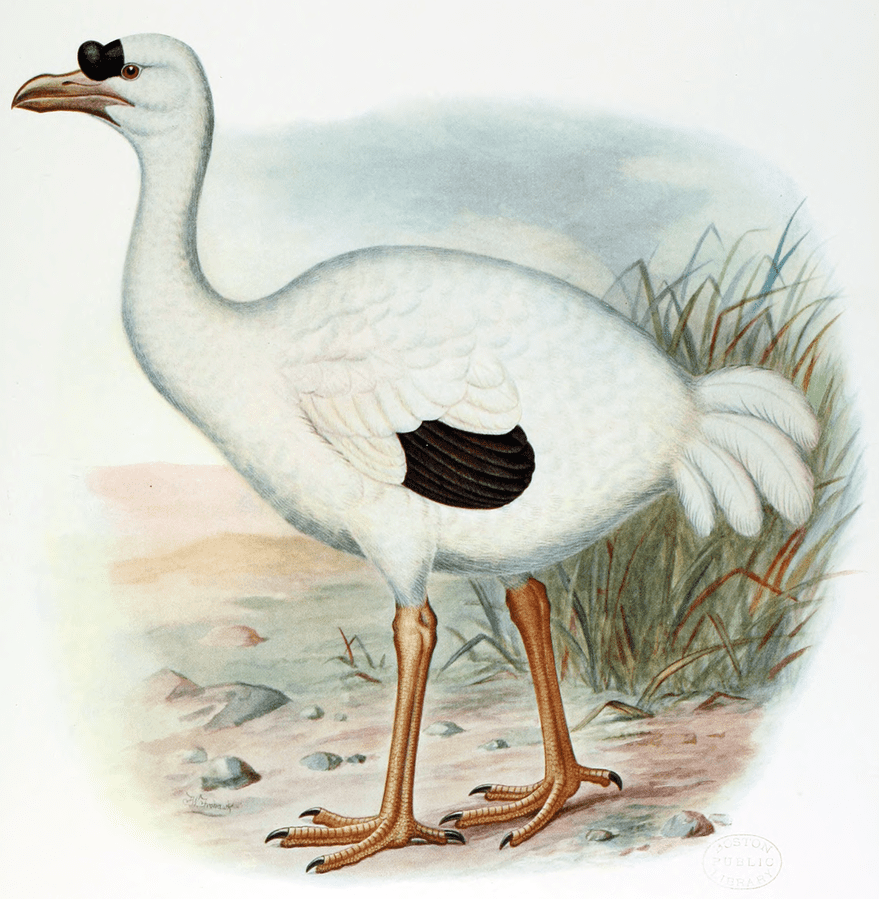
Image Source: Wikimedia
40. Reunion kestrel
Reunion kestrel is an extinct bird species that belongs to the falcon family. It is seen in the Mascarene island of Réunion and also a part of the Western Indian Ocean radiation of kestrels. The subfossil of the bird species was found in the year 1674. It is one of the extinct animals on planet Earth.
41. Reunion rail
Reunion rail is an extinct bird species also known as Dubois’ wood-rail, which was seen in the Mascarene island of Réunion. The subfossil was seen in the 1996 in the Caverne de la Tortue on Réunion and scientifically described in 1999. There is a possibility that it became extinct in the late 17th century.
42. Reunion swamphen
Reunion swamphen also known as the Réunion gallinule or oiseau bleu is an extinct species of rail from Réunion, Mascarenes that were came out from the reports of travellers. The last description of the bird species was in the testimony of Père Brown’ in the year 1724.
43. Reunion pink pigeon
Reunion pink pigeon is an extinct species of pigeon that was native to the Mascarene island of Réunion. The species was described by Dubois in 1674. It is very little has to be said about his extinction and the last report of native pigeons were by Père Bernardin in 1687 and by Guillaume Houssaye in 1689.
44. Réunion parakeet
Echo parakeet is a parrot species endemic to the Mascarene Islands of Mauritius and formerly Reunion. The only living parrot species is Echo parakeet rest all are extinct now. Réunion parakeet which is now extinct but along with the living echo parakeet is known as the Mauritius parakeet.
45. Mascarene parrot
Mascarene parrot also known as mascarin is an extinct species of parrot which was endemic to the endemic to the Mascarene island of Réunion in the western Indian Ocean. It is 35 cm long known to have a large red bill and long, rounded tail feathers.
46. Reunion owl
Réunion owl is a small owl which was seen in the Mascarene island of Réunion but became extinct before it can be described. It is also known through its subfossils and belongs to the group Mascarenotus. It looks similar to the Mauritius owl and the Rodrigues owl.
47. Hoopoe starling
One of the extinct animals., Hoopoe starling is also known as the Réunion starling or Bourbon crested starling mostly seen on the Mascarene island of Réunion and became extinct in the 1850s. The bird was first mentioned in the 17th century and was long thought to be related to the hoopoe from where it derived its name.
48. Mauritian giant skink
Mauritian giant skink or Leiolopisma mauritiana is the largest known extinct species of skink. It was initially seen in Mauritius but become extinct around 1600 probably because of the introduced predators.
49. Reunion giant tortoise
Réunion giant tortoise is the extinct species of giant tortoise belongs to the family Testudinidae. It was native to the Réunion Island in the Indian Ocean. The count of the species was good in the 17th and early 18th centuries, however, they were killed by the European sailors, and finally became extinct in the 1840s.
50. Panthera spelaea (Cave Lion)
One of the extinct animals, Cave lion also is known as “Eurasian cave lion”, “European cave lion”, or “steppe lion” is an extinct species of Panthera spelaea which was evolved in Europe approximately 600,000 years ago. After fossil analysis of the bone samples, It is believed that it is genetically isolated and different from the modern lion mostly seen in teh regions of Africa and Asia. According to the Nuclear genomic evidence, there is no interbreeding with the ancestors of the modern lion. The oldest bone was excavated in Yakutia and radiocarbon dated at least 62,400 years old. After all analysis, it is believed that the species extinct about 13,000 years ago.
Talking about the evolution, Lion like species appeared on Earth approximately 1.7 to 1.2 million years ago. After these cat species dispersed to Europe from East Africa during the first half of the Middle Pleistocene and hence giving rise to P. fossils in Central Europe by 610,000 years ago. Later, Panthera spelaea species evolved from the fossils nearly 460,000 years ago in central Europe during the late Saalian glaciation or early Eemian.
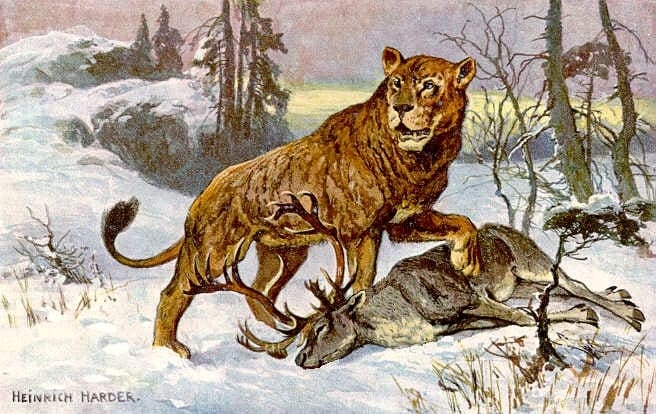
Image Source: Wikimedia
These are the top 10 extinct animals that have become extinct over the last century. As of today, here are several species of unique animals that are nearing extinction. The tiny vaquita porpoise, which is less than 30 left in the world, will likely go extinct in the next few years. The Culebra Parrot, also known as the Puerto Rican parrot, has a current estimated wild population of 34-40 parrots, is also close to extinction. Now, we will talk about different extinct animals based on the regions in the world, we will first start with Africa and Réunion islands, We will list down the extinct animal on various continents, We will start with Africa. We will increase the listing by covering different other in the world. The se are extinct animals in the world. Kindly share and do post your comments.



